|
HYPO WHAT?


2) A short history: from
Zátopek to now
(From the book "Hypoventilation training, push your
limits", Xavier Woorons, 2014,
166p.)
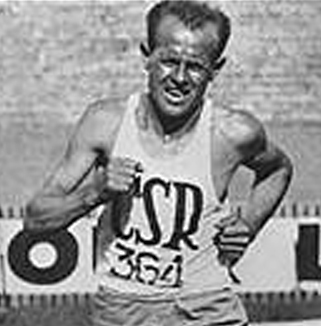 1950's:
The Eastern runners' practises 1950's:
The Eastern runners' practises
In the middle of the 20th century,
runners from
Eastern Europe and
former USSR
often trained by voluntarily
restricting
breathing
frequency.
The most famous of them was Emil Zátopek, the Czech long-distance
runner, 4 times Olympic gold medallist between
1948 and 1952, who
broke 18 world records.
During his training,
Zatopek regurlary held his breath for as long as
possible
to
strengthen his pulmonary capacity and to simulate the
conditions of
competition.
Once, he held his breath for so long
that
he lost consciousness. In an era of empirical practice,
whether such practice was really effective was unknown,
but when performed
to such extremes, it was
probably not fully safe for
athletes.
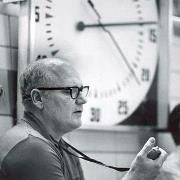 1970's:
A new training method in swimming 1970's:
A new training method in swimming
From the Olympic Games of Mexico in
1968 (altitude: 2200 m), training with restricted breathing became
of greater interest. Indeed, during the Games, the
altitude-induced lower O2
concentrations led to a drop in performances in middle and long
distance trials.
Consequently, the
goal was to find ways to enhance O2
utilization at the muscular level in order to increase
performance at altitude or at sea level. In the early
1970's, one of the greatest swimming trainers, the American James
Counsilman,
hypothesized that
swimmers could decrease
O2
supply to the muscles and could simulate an
altitude training if they voluntarily breathed less frequently
during their training.
Thus, during the
1970’s, training with restricted breathing, classically called
“hypoxic training”, became very popular in the World of Swimming. In
each training session, a great number of swimmers included
exercises in which they had to inhale every 5, 7 or 9 arm strokes instead of
the 2-3 single arm strokes as usually
performed.
 1980's:
The application by middle distance runners 1980's:
The application by middle distance runners
In the 1980's,
while there was
still a lot of
enthusiasm for training with
restricted breathing
in swimming,
hypoventilation training practices emerged in athletics. This kind of
training was supported by the Brazilian
coach Luiz De Oliveira, who trained Joaquim
Cruz, the 1984 olympic champion of the 800m in Los Angeles, and Marie
Decker, the world champion of the 1500m and 3000m in 1983 in
Helsinki.
De
Oliveira often asked
his athletes to perform exercises with breath
holding
once a week. These exercises consisted
of running without breathing over several dozen meters or to hold one's breath in the last 30 m of the training
series in order to simulate fatigue that occurs during competition. Although applied
more rationally than
by the Eastern runners of the 1950’s, this
kind of training
was still not based on solid scientific
knowledge.
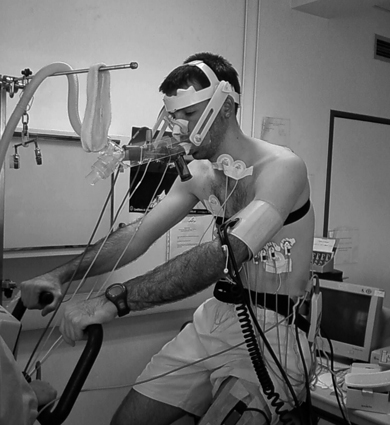 1980's-1990's:
The first scientific works 1980's-1990's:
The first scientific works
The first scientific
works on training with
restricted breathing
in swimming or running
were
mainly published from the 1980’s.
The results of
the studies contradicted the
hypotheses put forward by the World of Sport and challenged this kind
of training. Indeed, the studies
demonstrated that
while
exercise with
restricted breathing increased
CO2
concentrations in the body, it did not significantly
reduce
O2
concentrations.
Despite these conclusions, training with
restricted breathing
continued to be widely applied by swimmers in the
following years and became a classical training method, still
often called (erroneously) “hypoxic training”.
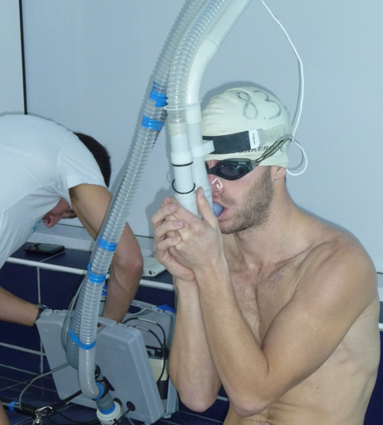 2000-2010:
Hypoventilation: the new formula! 2000-2010:
Hypoventilation: the new formula!
In
the 2000's, new scientific studies were undertaken by the
laboratory "Cellular and functional responses to hypoxia" of
Paris 13 University to propose a new approach to hypoventilation
training. Xavier Woorons, a french researcher, expert in
exercise physiology, hypothesized that a significant decrease in blood oxygenation
could occur if breath
holdings were performed with a reduced amount of air in the lungs.
So far, hypoventilation had always been carried out at high
lung volume, that is with lungs full of air during the breath
holds. The results of the scientific studies were very
encouraging. They showed that hypoventilation at low lung
volume (i.e "exhale-hold" technique) could significantly reduce
the O2
concentrations both in the blood and in the muscles during different
forms of exercise (cycling, running, swimming). Without leaving
sea level and without using expensive and heavy devices, it was
possible to train virtually at an altitude above 2000 meters! To
test the effectiveness of the method, runners were asked to train
for 4 weeks by applying the exhale-hold technique. At the end of
the training period, hypoventilation induced physiological
adaptations that delayed the onset of fatigue and improved performance in most
of the runners.
2015: Today
 To date, on the basis of the studies carried out over
these last few years, it is possible to conclude that
hypoventilation training at low lung volume is advantageous
in sports requiring continuous or intermittent intense efforts.
It represents an innovative training method (or physical
preparation method) that can be used by many athletes, in many
different disciplines.
To date, on the basis of the studies carried out over
these last few years, it is possible to conclude that
hypoventilation training at low lung volume is advantageous
in sports requiring continuous or intermittent intense efforts.
It represents an innovative training method (or physical
preparation method) that can be used by many athletes, in many
different disciplines.
 
|
The first book dealing with
hypoventilation training


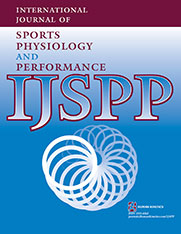
Scientific study on hypoventilation
training (2017)


Scientific study on hypoventilation
training (2016)

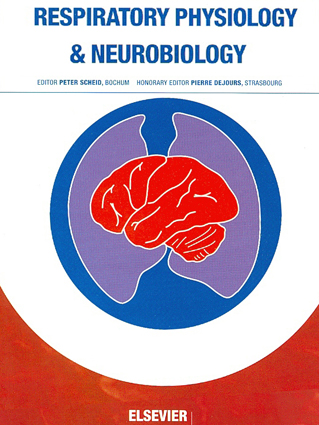
Scientific study on hypoventilation
training (2014)

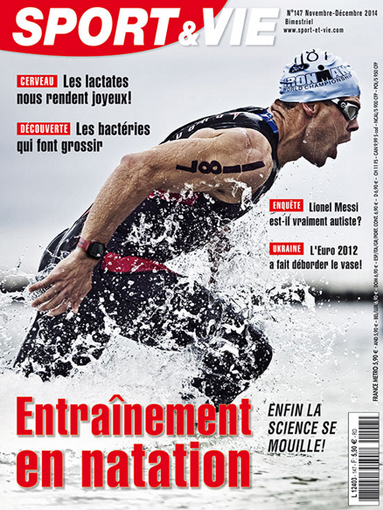
Hypoventilation training in swimming
(french) (2014)

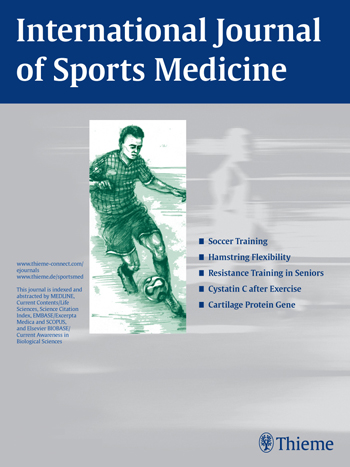
Scientific study on hypoventilation
training (2011)


Scientific study on hypoventilation
training (2010)

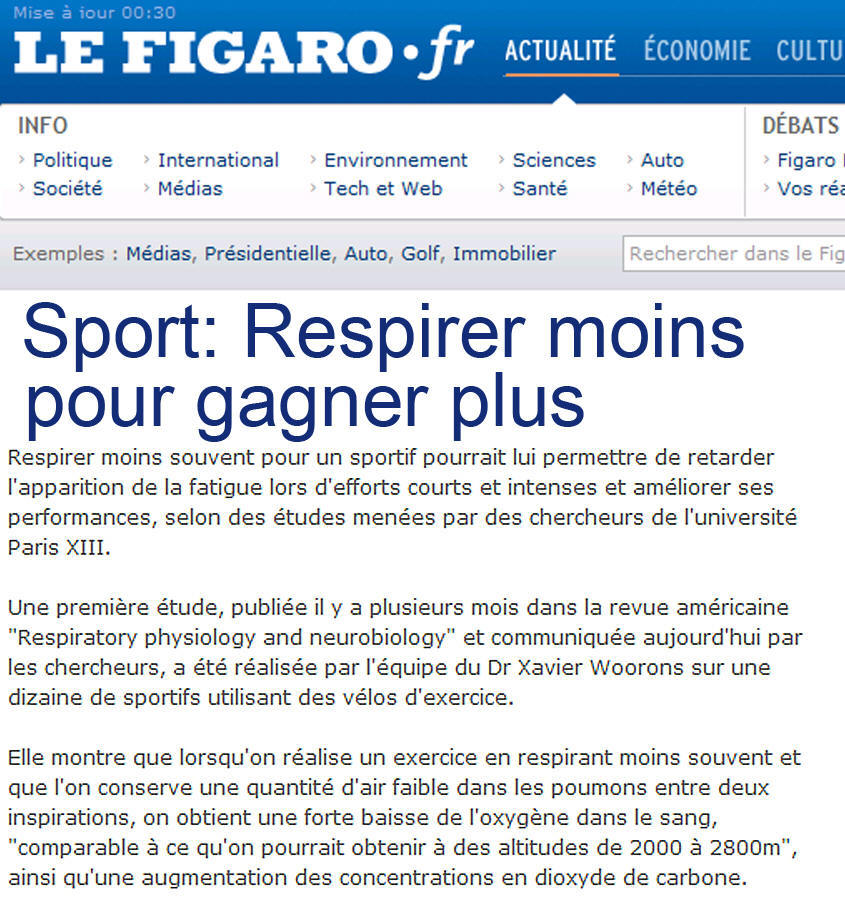
Press article on hypoventilation
training (french)


Scientific study on hypoventilation
training (2008)

|
